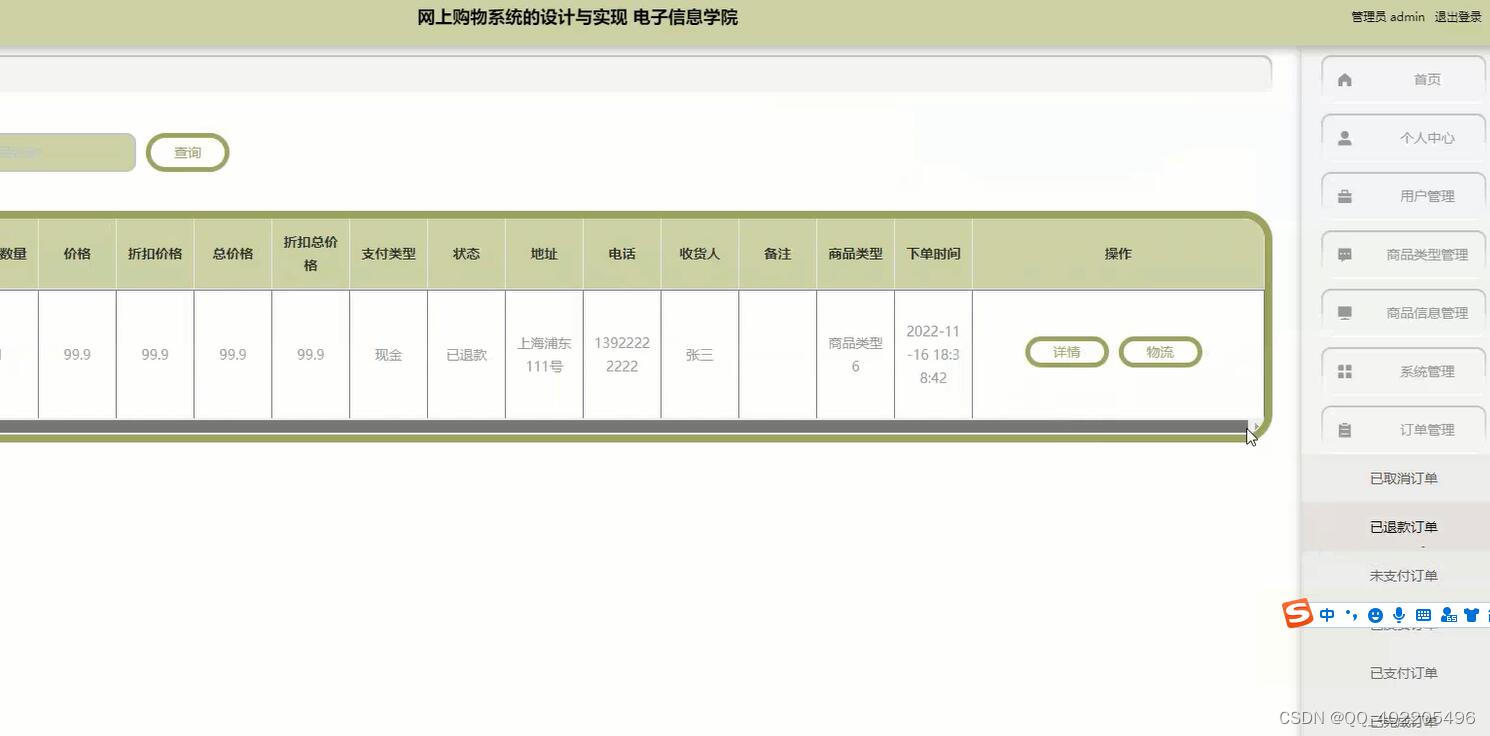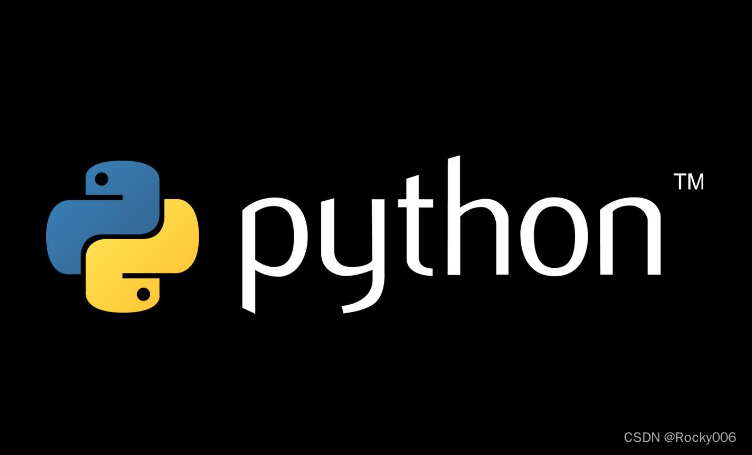简述 / 前言
前面主要了解了 Python 的语言基础,现在我们来了解 Python 给我们提供了哪些数据类型,以及如何使用这些数据类型。
上一篇文章我们介绍了数值数据类型,这篇我们介绍序列数据类型(str、tuple、list、bytes和bytearray)。
1. str 数据类型(字符串)
- 单引号(’ ‘)。包含在单引号中的字符串,其中可以包含双引号。
- 双引号(” “)。包含在双引号中的字符串,其中可以包含单引号。
- 三单引号(“” “”)。包含在三单引号中的字符串,可以跨行。
- 三双引号(“”” “””)。包含在三双引号中的字符串,可以跨行。
1.1 str对象
>>> str(2023)
'2023'
>>> str(False)
'False'
>>> str(3.141592)
'3.141592'
>>> str('小邓在森林')
'小邓在森林'
>>> str([1, 2, 3])
'[1, 2, 3]'
>>> str(None)
'None'
1.2 str对象属性和方法
-
转成大写
>>> s = 'abc' >>> s.upper() # 字符串对象s的方法。输出:'ABC' 'ABC' >>> str.upper(s) # str类方法,字符串s作为参数。输出:'ABC' 'ABC' -
转成小写
>>> s = 'AbC' >>> s.lower() 'abc' >>> str.lower(s) 'abc' >>> s = '小邓在森林' >>> s.lower() '小邓在森林' >>> str.lower(s) '小邓在森林'Python还提供了另一个内置函数
repr(),函数repr()返回一个对象的更精确的字符串表示形式,但是经过实操没发现它和str()有什么区别。>>> c = 1 / 3 >>> str(c) '0.3333333333333333' >>> repr(c) '0.3333333333333333'
1.3 字符串编码
>>> ord('a')
97
>>> ord('A')
65
>>> chr(97)
'a'
>>> chr(65)
'A'
>>> ord('森')
26862
>>> chr(26862)
'森'
1.4 转义字符
| 转义字符 | 功能/作用 | 转义字符 | 功能/作用 |
|---|---|---|---|
| ’ | 单引号 | n | 换行(LF) |
| “ | 双引号 | r | 回车(CR) |
| \ | 反斜杠 | t | 水平制表符(HT) |
| a | 响铃(BEL) | v | 垂直制表符(VT) |
| b | 退格(BS) | ooo | 八进制Unicode码对应的字符 |
| f | 换页(FF) | xhhh | 十六进制Unicode码对应的字符 |
注:标粗的 5 个转义字符是本人觉得最常用的~
1.5 字符串的格式化
- 字符串.format(value1, value2, …)
>>> "我是{0}, 加入CSDN已经{1}年了".format("小邓在森林", 2) '我是小邓在森林, 加入CSDN已经2年了' - str.format(格式字符串, value1, value2, …)
>>> str.format("我是{0}, 加入CSDN已经{1:.1f}年了", "小邓 在森林", 2) '我是小邓在森林, 加入CSDN已经2.0年了' - format(value, 格式字符串)
>>> format(99.99, "0.4f") '99.9900' - 格式字符串 % (value1, value2, …) 兼容Python2的格式,但是这里不建议使用!
>>> "我是%s, 加入CSDN已经%2d年了" % ("小邓在森林", 2) '我是小邓在森林, 加入CSDN已经 2年了'
- 居中对齐:
>>> print("1".center(10)) 1 >>> print(format("121", "^10")) 121 >>> print(format("12321", "^10")) 12321 - 右对齐
>>> print("1".rjust(10, "*")) *********1 >>> print(format("121", "*>10")) *******121 >>> print(format("12321", "*>10")) *****12321 - 左对齐
>>> print("1".ljust(10, "*")) 1********* >>> print(format("121", "*<10")) 121******* >>> print(format("12321", "*<10")) 12321*****
2. tuple 数据类型(元组)
元组可以通过创建 tuple 对象来创建,在 Python 中用小括号表示。
2.1 创建元组对象
>>> t1 = ()
>>> t2 = 1, 2
>>> t3 = 1,
>>> t4 = (1, 2, 3)
>>> t5 = 'a', 'b', 'c'
>>> t6 = 3.14 # 后面没加逗号,所以不是元组!
>>> print(t1, t2, t3, t4, t5, t6)
() (1, 2) (1,) (1, 2, 3) ('a', 'b', 'c') 3.14
3. list 数据类型(列表)
类似下面这种形式的数据就是 list :[x1, x2, [x3, …, xn]],可以通过创建 list 对象来创建。
3.1 创建列表对象
>>> l1 = []
>>> l2 = [2023]
>>> l3 = ['a', 'b', 'c']
>>> print(l1, l2, l3)
[] [2023] ['a', 'b', 'c']
3.2 list 对象的方法
>>> s = [1, 2, 3]
| 方法 | 功能 |
|---|---|
| s.append(x) | 把对象x追加到列表s尾部 |
| s.clear() | 删除所有元素。相当于del s[:] |
| s.copy() | 拷贝列表 |
| s.extend(f) | 把序列t附加到s尾部 |
| s.insert(index, x) | 在下标 index 位置插入对象x |
| s.pop([index]) | 返回并移除下标 index 位置对象,省略 index 时为最后对象。若超出下标,将导致IndexError ! |
| s.remove(x) | 移除列表中第一个出现的x。若对象不存在,将导致ValueError ! |
| s.reverse() | 逆置列表 |
| s.sort() | 列表排序 |
>>> s = [1, 2, 3]
>>> s.append('abc')
>>> s
[1, 2, 3, 'abc']
>>> s.clear()
>>> s
[]
>>> s = [1, 2, 3]
>>> s1 = s.copy()
>>> s1
[1, 2, 3]
>>> s.extend('abc')
>>> s
[1, 2, 3, 'a', 'b', 'c']
>>> s.pop(3)
'a'
>>> s
[1, 2, 3, 'b', 'c']
>>> s.remove('b')
>>> s
[1, 2, 3, 'c']
>>> s.reverse()
>>> s
['c', 3, 2, 1]
>>> s.sort() # 注意:排序时不能有字符串,只支持数值类型的元素排序!!!
Traceback (most recent call last):
File "<stdin>", line 1, in <module>
TypeError: '<' not supported between instances of 'int' and 'str'
>>> s.remove('c')
>>> s
[3, 2, 1]
>>> s.sort()
>>> s
[1, 2, 3]
3.3 列表解析表达式
value for i_1 in 序列1 ... for i_N in 序列N:迭代序列里面的所有内容,并计算生成列表。value for i_1 in 序列1 ... for i_N in 序列N if ...:按照条件迭代,并计算生成列表。
>>> [val**2 for val in range(5)] # 平方
[0, 1, 4, 9, 16]
>>> [(val, val**2) for val in range(5)] # 原值,平方
[(0, 0), (1, 1), (2, 4), (3, 9), (4, 16)]
>>> [val for val in range(10) if val%2==1] # 取奇数
[1, 3, 5, 7, 9]
4. 系列数据的基本操作
| 函数 | 功能 |
|---|---|
| len() | 获取系列的长度 |
| max() | 获取系列中元素最大值 |
| min() | 获取系列中元素最小值 |
| sum() | 获取列表或元组中各元素之和 |
| x in s | 元素x在s中吗?是的话为True,否则为False |
| x not in s | 元素x不在s中吗?是的话为True,否则为False |
| s.count(x) | 返回x在s中出现的次数 |
| s.index(x) | 返回x在s中第一次出现的下标 |
| sorted(iterable, key=None, reverse=False) | 返回系列的排序列表 |
| all(iterable) | 如果序列的所有值都为True,返回True;否则,返回False |
| any(iterable) | 如果序列的任意值为True,返回True;否则,返回False |
-
字符串
>>> s = '小邓在森林-2023' >>> len(s) 10 >>> max(s) '邓' >>> min(s) '-' >>> s1 = 'abcd' >>> len(s1) 4 >>> max(s1) 'd' >>> min(s1) 'a' >>> s2 = '' >>> len(s2) 0 >>> max(s2) Traceback (most recent call last): File "<stdin>", line 1, in <module> ValueError: max() arg is an empty sequence >>> min(s2) Traceback (most recent call last): File "<stdin>", line 1, in <module> ValueError: min() arg is an empty sequence >>> '小' in s True >>> '1' in s False >>> '1' not in s True >>> s.count('2') 2 >>> s.count('1566') 0 >>> s.index('森林') 3 >>> s.index('6') # '6'不在s中 Traceback (most recent call last): File "<stdin>", line 1, in <module> ValueError: substring not found >>> sorted(s) ['-', '0', '2', '2', '3', '在', '小', '林', '森', '邓'] >>> sorted(s, reverse=True) ['邓', '森', '林', '小', '在', '3', '2', '2', '0', '-'] >>> s1 = 'abAD' >>> sorted(s1, key=str.upper) ['a', 'A', 'b', 'D'] >>> sorted(s1, key=str.lower) ['a', 'A', 'b', 'D']注:汉字求
max,min是先将汉字转为汉字编码再进行大小比较,而英文则是转为 ASCII 码。空字符串不能求max和min! -
元组
>>> t = (1, 2, 3) >>> len(t) 3 >>> max(t) 3 >>> min(t) 1 >>> t1 = () >>> len(t1) 0 >>> max(t1) Traceback (most recent call last): File "<stdin>", line 1, in <module> ValueError: max() arg is an empty sequence >>> min(t1) Traceback (most recent call last): File "<stdin>", line 1, in <module> ValueError: min() arg is an empty sequence >>> 1 in t True >>> -1 in t False >>> -1 not in t True >>> t.count(1) 1 >>> t.index(2) 1 >>> t.index(1) 0 >>> sorted(t) [1, 2, 3] >>> sorted(t, reverse=True) [3, 2, 1]注:空元组不能求
max和min! -
列表
>>> l = [1, 2, 3] >>> len(l) 3 >>> max(l) 3 >>> min(l) 1 >>> l1 = [] >>> len(l1) 0 >>> max(l1) Traceback (most recent call last): File "<stdin>", line 1, in <module> ValueError: max() arg is an empty sequence >>> min(l1) Traceback (most recent call last): File "<stdin>", line 1, in <module> ValueError: min() arg is an empty sequence >>> 3 in l True >>> 3 not in l False >>> l.count(3) 1 >>> l.index(2) 1 >>> sorted(l) [1, 2, 3] >>> sorted(l, reverse=True) [3, 2, 1]注:空列表不能求
max和min!
如何访问系列元素?
用 s[index] 即可访问不同数据类型的 index 位置的数据,注意它是从 0 开始计算的,访问时不能越界!!!
python 中如果 index 为负数,表示从尾部向前取元素,最后一个元素索引为 -1。
其中:
s
[
0
]
=
s
[
−
l
e
n
(
s
)
]
s[0] = s[-len(s)]
s[0]=s[−len(s)]
-
字符串
>>> s = 'abcdefg' >>> s[0] 'a' >>> s[-1] 'g' >>> s[10] # 越界 Traceback (most recent call last): File "<stdin>", line 1, in <module> IndexError: string index out of range -
元组
>>> t = (1, 2, 3) >>> t[0] 1 >>> t[-1] 3 >>> t[-3] 1 >>> t[100] # 越界 Traceback (most recent call last): File "<stdin>", line 1, in <module> IndexError: tuple index out of range -
列表
>>> l = [1, 2, 3] >>> l[0] 1 >>> l[-1] 3 >>> l[2023] Traceback (most recent call last): File "<stdin>", line 1, in <module> IndexError: list index out of range
5. 系列的切片操作
前面只说了取一个元素,那么能不能一次性取多个元素呢?答案是可以的。
用 s[start:stop] 或者 s[start:stop:step] 就可以一次性取多个元素。
| – | 含意 |
|---|---|
| start | 取值的开始索引 |
| stop | 取值的终止索引 |
| step | 取值步长 |
注:切片操作的区间是左闭右开的,即只能取到 s[start], ..., s[stop-1] ,s[stop] 无法取到!
如果 stop > len(s)-1 , 则只会取到索引为 len(s)-1 的元素。
-
字符串
>>> s = 'abcdefg' >>> s[0:2] 'ab' >>> s[1:3] 'bc' >>> s[1:6:2] # 会间隔一个元素再取 'bdf' >>> s[::2] # 从第一个元素开始取,然后间隔一个元素再取 'aceg' >>> s[::-1] # 从后往前取 'gfedcba' >>> s[::-2] # 从后往前取,每次间隔一个元素 'geca' -
元组
>>> t = (1, 2, 3, 4, 5, 6) >>> t[2:6] (3, 4, 5, 6) >>> t[::-3] (6, 3) >>> t[::-1] (6, 5, 4, 3, 2, 1) >>> t[2:6:2] (3, 5) >>> t[2:10] # 等价于t[2:6] (3, 4, 5, 6) >>> t[2:6] (3, 4, 5, 6) -
列表
>>> l = [1, 2, 3, 4, 5, 6] >>> l[-5:-1] [2, 3, 4, 5] >>> l[-5:-1:2] [2, 4] >>> l[-5:-1:-1] [] >>> l[-1:-5:-1] [6, 5, 4, 3]
6. 字节系列
字节系列(bytes 和 bytearray)是由 8 位字节数据组成的系列数据类型,即 0<=x<256 的整数系列。
6.1 bytes常量
使用字母 b 加单引号或双引号括起来的内容。
- 单引号(
b' ')。包含在单引号中的字符串,其中可以包含双引号; - 双引号(
b" ")。包含在双引号中的字符串,其中可以包含单引号; - 三单引号(
b''' ''')。包含在三单引号中的字符串,可以跨行; - 三双引号(
b""" """)。包含在三双引号中的字符串,可以跨行。
6.2 创建 bytes 和 bytearrary 对象
| 函数 | 功能 |
|---|---|
| bytes() | 创建空的bytes对象 |
| bytes(n) | 创建长度为n的bytes对象,各字节为0 |
| bytearrary() | 创建空的bytearrary对象 |
| bytearrary(n) | 创建长度为n的bytearrary对象,各字节为0 |
还有一些创建 bytes 和 bytearrary 对象的方法,因为这个不常用,所以不具体介绍,下面主要讲讲编码和解码的问题就结束了。
6.3 字节编码和解码
字符串可以通过 s.encode() 方法编码为字节码;通过 s.decode() 方法解码为字符串。
>>> s = '小邓在森林'
>>> b = s.encode()
>>> b
b'xe5xb0x8fxe9x82x93xe5x9cxa8xe6xa3xaexe6x9ex97'
>>> b.decode()
'小邓在森林'
这里只展示了字符串和字节码之间的转换,字符串还可以和 UTF-8、GBK 等编码进行转换!
文章传送门
上一篇文章:【人生苦短,我学 Python】(3)Python 常用内置数据类型 I —— 数值数据类型(int、float、complex、bool)
下一篇文章:
原文地址:https://blog.csdn.net/senlin_6688/article/details/134665042
本文来自互联网用户投稿,该文观点仅代表作者本人,不代表本站立场。本站仅提供信息存储空间服务,不拥有所有权,不承担相关法律责任。
如若转载,请注明出处:http://www.7code.cn/show_9799.html
如若内容造成侵权/违法违规/事实不符,请联系代码007邮箱:suwngjj01@126.com进行投诉反馈,一经查实,立即删除!





